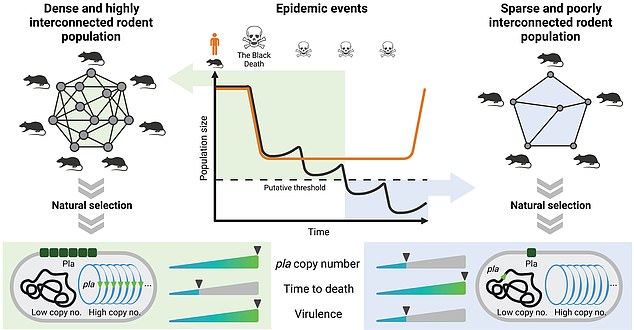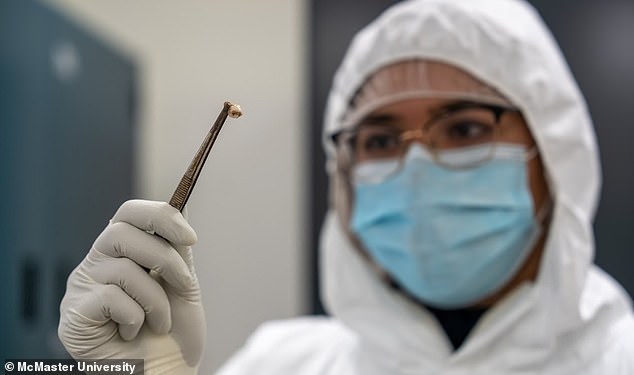-
READ MORE: Genetic study reveals insights into the fall of the Maya civilization
The Black Death still stands as the most lethal pandemic documented in human history.
The devastating pandemic led to the eradication of as much as half of Europe’s population.
Asia
and Africa,
massacring tens of millions of individuals.
Today, the enigma behind the Black Death’s extended period of dread has at last been unraveled.
Tolong support kita ya,
Cukup klik ini aja: https://indonesiacrowd.com/support-bonus/
Studies have shown that the modification of a single gene in Yersinia pestis—the microbe responsible for causing bubonic plague—enabled it to adapt and persist over time.
The study addresses key questions about how pandemics enter human populations, cause immense sickness, and evolve different levels of virulence.
And in the future, these discoveries might enable us to prevent another pandemic.
This marks one of the initial research efforts aimed at directly investigating alterations in an ancient pathogen, which continues to be prevalent today,” stated co-senior author Professor Hendrik Poinar. “The study seeks to uncover what factors contribute to the virulence, endurance, and potentially the ultimate disappearance of pandemics.

The recent research was carried out by scientists from McMaster University in Canada and France’s Institut Pasteur.
Their findings showed that the bacteria responsible for the plague gradually became less lethal over time, enabling them to persistently infect humans through three distinct pandemics spanning over a millennium.
The initial pandemic—the Plague of Justinian—occurred in the 500s at the beginning of the Middle Ages and persisted for approximately two centuries.
The Black Death started in the 1340s and went on to be recorded as the most lethal pandemic ever experienced by humanity, resulting in fatalities that reached nearly fifty percent among populations across Europe, Western Asia, and North Africa, with recurring episodes persisting over several hundred years.
The third bubonic plague pandemic originated in China during the 1850s and persists to this day, with occasional instances still documented in certain areas of sub-Saharan Africa.
“The significance of the plague bacteria in human history makes it crucial to understand how these epidemics propagate,” stated Javier Pizarro-Cerda, who is a co-author of the research.
The scientists studied specimens of Yersinia pestis, the bacterium responsible for the plague, from each outbreak.
In all three instances, the research indicates that the genetic makeup of each plague-causing bacterium changed over time, becoming less virulent and lethal.

It is believed that by triggering milder illnesses, these bacteria prolonged the duration of the pandemics as they had additional chances to transmit from one person to another.
The researchers validated this hypothesis by exposing rats to contemporary plague strains, demonstrating that the illness persisted for extended periods as the pathogen’s potency diminished.
Although antibiotics currently provide an effective defense against the plague, this study may help illuminate how other pandemics could potentially develop.
‘This allows us to gain a comprehensive understanding of how pathogens can adapt to different situations,’ Pizarro-Cerda said.
“We have ultimately gained clearer insights into what the plague entails and how we can devise strategies to protect ourselves,” he remarked.
Read more







